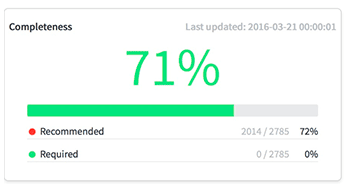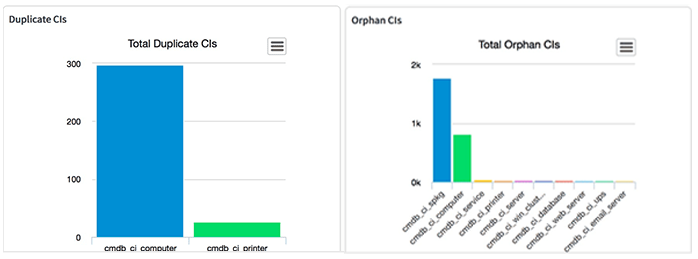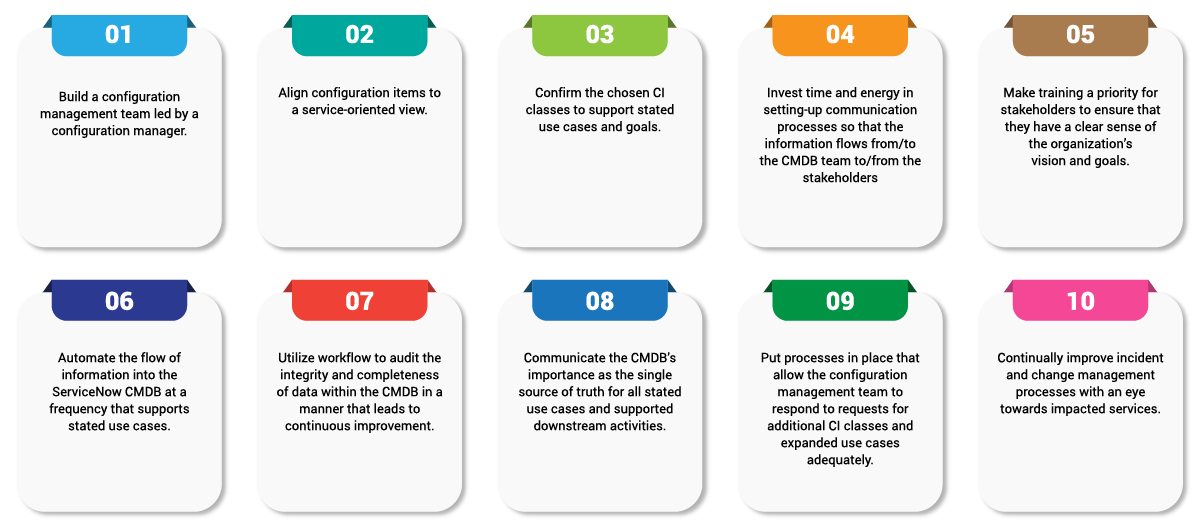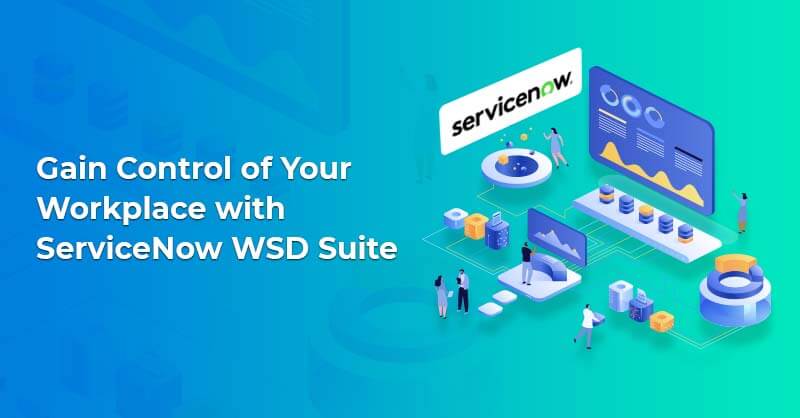ServiceNow CMDB: Accelerate Your Business Growth
Written by Soumiyan TM
Senior Software Engineer at Royal Cyber
Configuration Management Database (CMDB) is a data repository that contains information on the assets—servers, network devices, applications, and more—and services managed by the company. There are various CMDBs in the market, and ServiceNow Configuration Management Database is among the best. It is a single system of record that maintains configuration data related to an IT infrastructure. ServiceNow CMDB enables organizations to seamlessly import CI data from other modules. It also auto-checks this data and normalizes it. CMDB enables IT teams to understand better the organization’s IT environment, particularly business service impact analysis, asset management, and compliance. ServiceNow Configuration Management Database cmdb becomes service-aware when paired with ServiceNow Service Mapping. The pairing enables ServiceNow applications to become service-aware.
Why Is Configuration Management Database Needed?
Configuration Management Database's goal is to provide information that helps organizations make better business decisions and smoothly run IT Service Management processes. It allows users to identify dependencies among processes, people, applications, and IT infrastructure. ServiceNow Configuration Management Database also enables users to find opportunities for change, ensure faster resolution of incidents and fewer errors, and more.

Figure: Steps to a Well-managed CMDB
There are several instances where organizations have information scattered across various systems, making it difficult for them to extract essential data. They don’t use Configuration Management Database efficiently to control their IT environment. For instance, consider a scenario in an organization where Jessie is a Risk Manager tasked with pulling data for an upcoming audit. She reaches out to her IT department for help.
Gary: Hi Brett, I need a list of all our applications for an upcoming audit.
IT Department: We don't have a comprehensive list of applications across the organization.
Gary: Can you use the Configuration Management Database?
IT Department: That data is not accurate.
Gary: What about an Application Portfolio Management system?
IT Department: We are not using that system for long.
Gary: OK, use the enterprise architecture system.
IT Department: Even that system is not set up correctly.
Gary: SharePoint?
IT Department: No, sorry
Gary: Are there any other options?
IT Department: Maybe excel?
Jessie and her team will now spend days, or even weeks, tracking down information to complete the audit due to the company’s poorly structured IT environment. All this could have been avoided if the organization had a properly configured and maintained CMDB.
Challenges In Handling CMDB
Organizations face several challenges while consolidating and maintaining Configuration Management Database. Some of them are capturing unreliable CI data acquisition, inconsistent data quality, and unclear relationships. Due to these challenges, CMDB projects have a reputation for failed starts, lengthy implementations, and ongoing maintenance issues, often resulting in limited business value and unrewarded effort.
Common Questions Enterprises Ask Before Implementing CMDB
- What is CMDB’s current state of health—complete, compliant, correct?
- Are CIs meeting configuration standards to achieve compliance?
- Are CIs current or out of date?
- Do we have duplicate CIs? If yes, then how to remediate them?
It’s essential to answer these questions beforehand to ensure that the Configuration Management Database meets the organizational goals.
How Can Implementing CMDB in ServiceNow Solve this Problem?
To effectively manage and improve IT service delivery, it's essential to know what is used in the IT environment and its current configuration data. A well-implemented and maintained Configuration Management Database CMDB store information of the enterprise infrastructure, including reliable configuration data for physical and virtual servers, computers, routers, switches, applications, cloud instances, and more. It also serves as the foundation for all the configuration management processes such as Service Management, Asset Management, Operations Management, and others. Understanding the IT environment with ServiceNow CMDB is easy.
A ServiceNow Configuration Management Database can improve several IT Service Management processes such as incident management, change management, and problem management.
Use Case 1: The IT service desk can use Configuration Management Database cmdb during an incident management process to better understand network users' equipment and software.
Use Case 2: Operations managers can gain visibility into the servers, applications, and network devices on their network, including their relationships.
3 C’s to Calculate ServiceNow CMDB Health?
Monitoring and maintaining CMDB health is vital for the effective and efficient use of ServiceNow. Various CMDB health indicators help organizations calculate scorecards at the class, CI, and CMDB levels. The health indicators include required CIs, audits, and duplicate CIs.
The CMDB health is monitored and reported for the following key performance indicators:
Completeness: By completeness, we mean that CMDB uses recommended and required metrics.
Are your CMDB Configuration Items (CIs) populated with necessary data?

Compliance: By compliance, we mean that CMDB uses audit metrics.
Are your CMDB CIs configured as expected and meet desired state expectations?

Correctness: By correctness, we mean that CMDB uses duplicates, orphans, and staleness metrics.
Are your CMDB CIs up-to-date and accurate with minimal to no duplicates?

Key Features of ServiceNow CMDB
- ServiceNow Configuration Management Database uses a single data model with conventional processes, standard taxonomy, and pre-negotiated semantics, format, and quality standards for exchanged data.
- Every view, application, and table built on the ServiceNow platform leverages a consolidated, single system of record.
- The data model is easily extensible. The base system tables and views are extendable; users can reference fields from other tables to drive workflow; and data validation and normalization rules ensure that organizations only use trusted data across any application, form, or workflow.
Embark on a Configuration Management Journey with ServiceNow CMDB
ServiceNow CMDB allows organizations to manage critical business services easily. To keep CMDB current and healthy with essential service information, organizations must achieve the below-mentioned milestones to embark on a successful configuration management journey.





